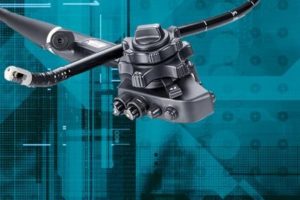 The United States Food and Drug Administration (FDA) recently held a panel discussion to review the causes and possible solutions to safety issues arising from the use of duodenoscopes. Participants in the FDA’s General Hospital and Personal Use Panel of the Medical Devices Advisory Committee discussed how particular aspects of duodenoscopes have led to recent outbreaks of superbugs at certain sites.
The United States Food and Drug Administration (FDA) recently held a panel discussion to review the causes and possible solutions to safety issues arising from the use of duodenoscopes. Participants in the FDA’s General Hospital and Personal Use Panel of the Medical Devices Advisory Committee discussed how particular aspects of duodenoscopes have led to recent outbreaks of superbugs at certain sites.
The FDA panel covered topics that covered how to improve or replace the high-level disinfection process for duodenoscopes in order to increase patient safety. While participants from both public and private organizations had various ideas for improving safety, they all agreed that there is much to be done to make duodenoscopes safer to use. As this article by Shannon Firth at MedPage Today states:
“Panel chair Frank Lewis Jr., MD, executive director emeritus for the American Board of Surgery, called the lack of adequate worker training and oversight the “dominant factor” behind the problems in reprocessing the scopes. Many of these technicians are low-wage, low-literacy workers who are asked to follow manuals that may include hundreds of steps, and some are bullied into working more quickly.
Guest speaker Cori Ofstead, MSPH, an expert on human factors and quality assurance from St. Paul, Minnesota, said recent surveys of reprocessing professionals from the International Association of Healthcare Central Service Materiel Management, showed that only 36% of technicians did any visible inspection of endoscopes after reprocessing, 17% skipped steps, and 40% reported experiencing or observing bullying on a daily basis.
Panelist Gary Socola, CEO of Highpower Validation Testing & Lab Services in Rochester, New York, noted that only four states in the U.S. require certification for these technicians.
“There’s very good training out there … and people want to learn, we just have to make that possible,” he said.
Because the FDA has no jurisdiction over training, Lewis recommended that the agency work with manufacturers, the Joint Commission, and other relevant agencies (including the Centers for Medicare & Medicaid Services) on strategies for improving training and worker conditions.
…When asked about the use of high-level disinfection versus sterilization, most members felt that high-level disinfection provides an “adequate margin of safety.”
Sterilization offers a higher margin of safety but carries its own challenges. (The advisory committee also provided recommendations to the FDA on Wednesday and Thursday on how to address issues around ethylene oxide sterilization of medical devices.)
Jason Dominitz, MD, a gastroenterologist at the Veterans Health Administration in Seattle, held that requiring sterilization would limit access.
But Isaac Benowitz, MD, a pediatrician and epidemiologist for the CDC, said all the data he’s seen suggest high-level disinfection is “rarely done properly” and urged switching to sterilization.
“We’ve been making incremental changes and improvements in high level disinfection and devices for decades and we’re still here talking about it,” said Benowitz.
…The FDA continues to emphasize that for the “appropriate population,” the benefits of duodenoscopes still outweigh their risks.
While medical device reporting data of infection rates associated with contaminated duodenoscopes have fallen since 2015, reports of contaminated duodenoscopes have risen, according to Haugen’s presentation. The increased contamination rates may be due to improved sampling and culturing by healthcare facilities, she noted.
An analysis of data from 2015 to 2019 in and outside of the U.S. found two death reports, a sharp reduction from the peak of 39 deaths in the fall of 2016, Haugen said. Of the 79 total death reports, 69 occurred in the U.S.
Haugen noted that causality can’t be established with these reports and that adverse event rates are often under-reported.
Interim results of FDA’s mandated postmarket studies reported in July 2019 found that “high concern organisms” were found in about 4-6% of devices.”
Read the entire article here: FDA Panel: Workers a Key Factor in Dirty Duodenoscope Saga
As discussion continue about how to improve the safety of duodenoscopes and other flexible endoscopes, hospitals must ensure that they’re doing everything they can to protect themselves and their patients from harm. The FDA panel rightly points out that a major risk factor of using duodenoscopes stems from issues with reprocessing difficulties and from the staff in charge of reprocessing scopes. Make sure that your staff is following the proper processes and protocols each and every time a duodenoscope is reprocessed. Systems such as iRIScope can display the proper workflow for reprocessing duodenoscopes and document the process electronically. Any breaches of protocol can be discovered in real-time to protect patients and identify which staff members need additional training on reprocessing techniques. You owe it to your staff and your patients to offer everyone the peace of mind that duodenoscopes and all other flexible endoscopes are being properly reprocessed every single time.
